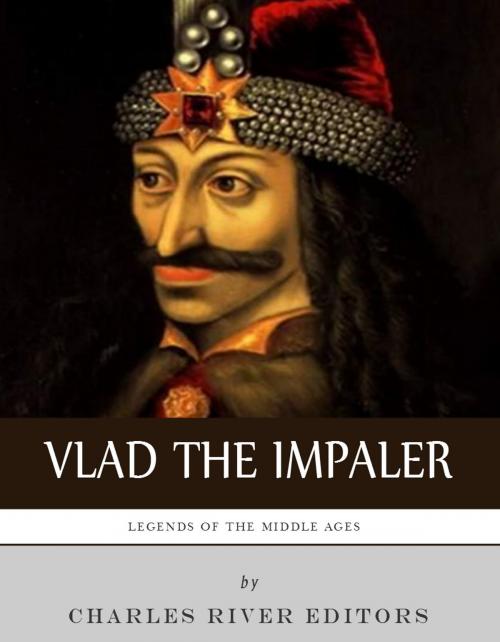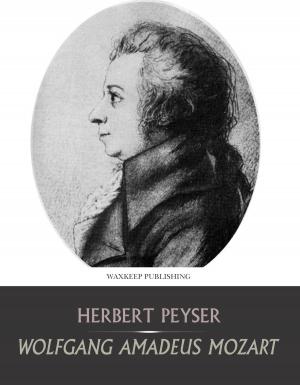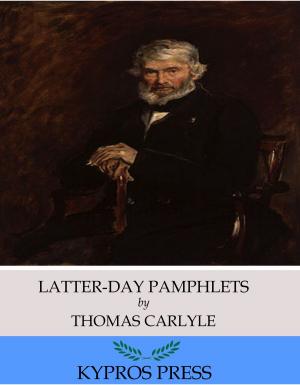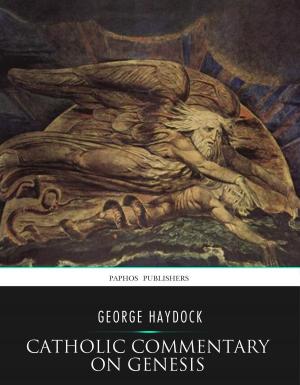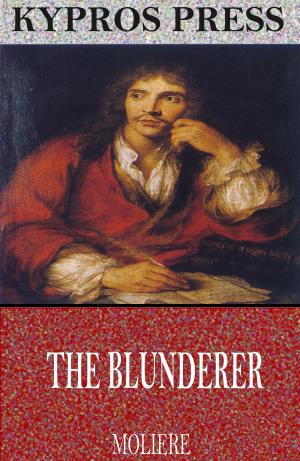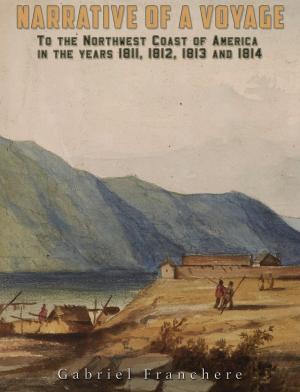Legends of the Middle Ages: The Life and Legacy of Vlad the Impaler
Nonfiction, History, Eastern Europe, Biography & Memoir, Royalty, Historical| Author: | Charles River Editors | ISBN: | 9781475320770 |
| Publisher: | Charles River Editors | Publication: | January 1, 2013 |
| Imprint: | Language: | English |
| Author: | Charles River Editors |
| ISBN: | 9781475320770 |
| Publisher: | Charles River Editors |
| Publication: | January 1, 2013 |
| Imprint: | |
| Language: | English |
*Includes pictures of Vlad and important people and places in his life. *Includes historical accounts that describe Vlad the Impaler and his notorious rule.*Discusses the authenticity of the accounts accusing Vlad of impaling tens of thousands and his other infamous misdeeds*Analyzes Vlad's legacy and his association with Bram Stoker's Dracula. And then he put many people on spinning wheels and killed them. And he also did many such other inhuman cruelties that were talked about in many countries. A German legend about Vlad DraculaA lot of ink has been spilled covering the lives of historys most influential figures, but how much of the forest is lost for the trees? In Charles River Editors Legends of the Middle Ages series, readers can get caught up to speed on the lives of important medieval men and women in the time it takes to finish a commute, while learning interesting facts long forgotten or never known. Many medieval figures are shrouded in mystery due to the scarcity of available sources and to the difficulties posed by the interpretation of historical narratives dating from this period. And even when there is enough documented evidence to put together a sufficiently coherent biographical account, other sources and accounts may emerge that flagrantly contradict the already established and generally accepted historical narrative.Nowhere is this more evident than in the legacy of Vlad III Dracula, who history has recorded as one of the most notorious and bloodthirsty tyrants of the 15th century. In addition to lending the name Dracula to Bram Stokers famous vampire, Vlad is known around the world by the cognomen Vlad the Impaler, due to his reputation for impaling thousands of his enemies. Vlad was reputed to be such a tyrant that his reputation and stories of his deeds spread across Germany and the rest of Europe during his lifetime. However, two very conflicting images emerge when contemporary narratives and chronicles are considered. On the one hand, he is portrayed by a variety of sources as a blood-thirsty tyrant with a penchant for devising unnecessarily cruel punishments. But on the other hand, he appears as a heroic and brave fighter against the Ottoman Empires ongoing threat towards Wallachian territorial integrity and autonomy. There are probably grains of truth to both depictions; Vlad did indeed implement an authoritarian internal policy in order to increase his power within the state, while also attempting to defend Wallachian independence in the face of both Hungarian and Ottoman encroachments. The accounts, however, are divergent in almost every other respect, including the specific character of his punishments and the motivations outlining them, the number of victims, and, most significantly, the personality of the ruler himself.Naturally, trying to determine who Vlad was and what he was really like has been made more complex by the subsequent fame he achieved in Europe and beyond, beginning with the dissemination of the German and Slavic 15th century narratives that aided in the construction of a diabolical, mythical-like figure that has been passed down throughout history to today. Bram Stokers widely-read novel, as well as its subsequent adaptations, added to the confusion by directly linking the infamous monster of South-Eastern Europe, the wampyr, with the figure of Vlad III Dracula. Even today, for most people Dracula brings to mind Stokers character, and only rarely the historical figure itself.Legends of the Middle Ages: The Life and Legacy of Vlad the Impaler chronicles the historic life, reign, and legacy of the notorious leader, but it also examines the controversial legends and tales about him in an attempt to separate fact from fiction. Along with pictures of important people, places, and events, you will learn about Vlad the Impaler like you never have before, in no time at all.
*Includes pictures of Vlad and important people and places in his life. *Includes historical accounts that describe Vlad the Impaler and his notorious rule.*Discusses the authenticity of the accounts accusing Vlad of impaling tens of thousands and his other infamous misdeeds*Analyzes Vlad's legacy and his association with Bram Stoker's Dracula. And then he put many people on spinning wheels and killed them. And he also did many such other inhuman cruelties that were talked about in many countries. A German legend about Vlad DraculaA lot of ink has been spilled covering the lives of historys most influential figures, but how much of the forest is lost for the trees? In Charles River Editors Legends of the Middle Ages series, readers can get caught up to speed on the lives of important medieval men and women in the time it takes to finish a commute, while learning interesting facts long forgotten or never known. Many medieval figures are shrouded in mystery due to the scarcity of available sources and to the difficulties posed by the interpretation of historical narratives dating from this period. And even when there is enough documented evidence to put together a sufficiently coherent biographical account, other sources and accounts may emerge that flagrantly contradict the already established and generally accepted historical narrative.Nowhere is this more evident than in the legacy of Vlad III Dracula, who history has recorded as one of the most notorious and bloodthirsty tyrants of the 15th century. In addition to lending the name Dracula to Bram Stokers famous vampire, Vlad is known around the world by the cognomen Vlad the Impaler, due to his reputation for impaling thousands of his enemies. Vlad was reputed to be such a tyrant that his reputation and stories of his deeds spread across Germany and the rest of Europe during his lifetime. However, two very conflicting images emerge when contemporary narratives and chronicles are considered. On the one hand, he is portrayed by a variety of sources as a blood-thirsty tyrant with a penchant for devising unnecessarily cruel punishments. But on the other hand, he appears as a heroic and brave fighter against the Ottoman Empires ongoing threat towards Wallachian territorial integrity and autonomy. There are probably grains of truth to both depictions; Vlad did indeed implement an authoritarian internal policy in order to increase his power within the state, while also attempting to defend Wallachian independence in the face of both Hungarian and Ottoman encroachments. The accounts, however, are divergent in almost every other respect, including the specific character of his punishments and the motivations outlining them, the number of victims, and, most significantly, the personality of the ruler himself.Naturally, trying to determine who Vlad was and what he was really like has been made more complex by the subsequent fame he achieved in Europe and beyond, beginning with the dissemination of the German and Slavic 15th century narratives that aided in the construction of a diabolical, mythical-like figure that has been passed down throughout history to today. Bram Stokers widely-read novel, as well as its subsequent adaptations, added to the confusion by directly linking the infamous monster of South-Eastern Europe, the wampyr, with the figure of Vlad III Dracula. Even today, for most people Dracula brings to mind Stokers character, and only rarely the historical figure itself.Legends of the Middle Ages: The Life and Legacy of Vlad the Impaler chronicles the historic life, reign, and legacy of the notorious leader, but it also examines the controversial legends and tales about him in an attempt to separate fact from fiction. Along with pictures of important people, places, and events, you will learn about Vlad the Impaler like you never have before, in no time at all.
